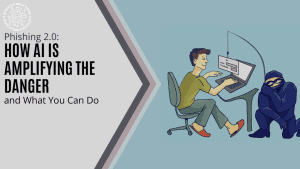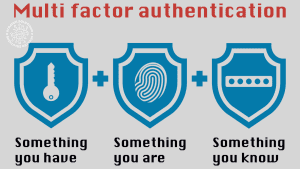
Phishing has always been a threat. Now, with AI, it’s more dangerous than ever. Phishing 2.0 is here. It’s smarter, more convincing, and harder to detect. Understanding this new threat is crucial.
A recent study found a 60% increase in AI-driven phishing attacks. This is a wake-up call that phishing is only getting worse. Here’s how AI is amplifying phishing and what you can do to protect yourself.
The Evolution of Phishing
Phishing has evolved significantly over time. It initially involved the mass distribution of poorly crafted emails with obvious lies, making them relatively easy to spot. However, the landscape has changed. Attackers now leverage AI to enhance their tactics.
AI enables them to create more convincing messages and target specific individuals, significantly improving the effectiveness of such attacks.
How AI Enhances Phishing
Creating Realistic Messages
Personalized Attacks
AI can gather information from social media and other sources and use it to create personalized messages. These messages include details about your life, such as your job, hobbies, or recent activities. This personalization increases the likelihood that you’ll believe the message is genuine.
Automated Phishing
Artificial intelligence (AI) automates various aspects of phishing. It is capable of rapidly sending out thousands of phishing messages and can also modify messages based on responses. For instance, if someone clicks a link but doesn’t enter any information, AI can automatically send a follow-up email. This persistent approach significantly increases the chances of a successful phishing attempt.
Deepfake Technology
Deepfakes are synthetic media in which a person in an existing image or video is replaced with someone else’s likeness using artificial neural networks. These AI-generated fake videos and audio can be incredibly realistic. Cyber attackers may leverage deepfakes to carry out attacks by creating convincing videos of high-level executives, such as CEOs, to manipulate employees into sharing sensitive information. This deceptive tactic can make attempts even more persuasive and challenging to recognize.
The Impact of AI-Enhancing Phishing
Increased Success Rates
Harder to Detect
Traditional deceptive email practices detection methods struggle against AI-enhanced attacks. Spam filters may not catch them. Employees may not recognize them as threats. This makes it easier for attackers to succeed.
Greater Damage
AI-driven scam can result in further damage. Targeted attacks may lead to significant data breaches, allowing threat actors to access sensitive information and disrupt operations, with severe consequences.
How to Protect Yourself
Be Skeptical
It’s important to be cautious of unsolicited messages, even if they seem to be from a reliable source. Always verify the sender’s identity and avoid clicking on links or downloading attachments from unknown sources.
Check for Red Flags
Look for red flags in emails: generic greetings, urgent language, or requests for sensitive information. Be cautious if the email seems too good to be true.
Use Multi-Factor Authentication (MFA)

MFA provides an additional layer of security, requiring an extra form of verification even if an attacker obtains your password. This makes it more difficult for them to access your accounts.
Educate Yourself and Others
Education is essential. Learn about fraudulent tactics, stay informed about the latest threats, and share this knowledge with others. Training can help people recognize and avoid fraudulent attacks.
Verify Requests for Sensitive Information
Remember to never share personal or sensitive information through email, as it can be easily compromised. If you ever receive a request for sensitive information, make sure to verify the request through a separate communication channel. You should directly contact the person using a verified phone number or email address that you already have on file for them. This ensures that the request is legitimate and helps to prevent potential fraud or phishing attempts.
Use Advanced Security Tools
It’s crucial to invest in advanced security tools to protect your digital assets. Consider using anti-phishing software to detect and block phishing attempts, and implement email filters to screen out suspicious messages. Additionally, make sure to keep your security software up to date for maximum protection.
Report Phishing Attempts
Enable Email Authentication Protocols
Email authentication protocols such as SPF, DKIM, and DMARC help prevent email spoofing. Make sure these protocols are activated for your domain to add an extra layer of security to your emails.
Regular Security Audits
Regular security audits are essential for identifying vulnerabilities in your systems and stopping fraudulent attacks.
Need Help with Safeguards Against Phishing 2.0?

Phishing 2.0 is a serious threat. AI amplifies the danger, making attacks more convincing and harder to detect. Have you had an email security review lately? Maybe it’s time.
Contact us today to schedule a chat about phishing safety.






